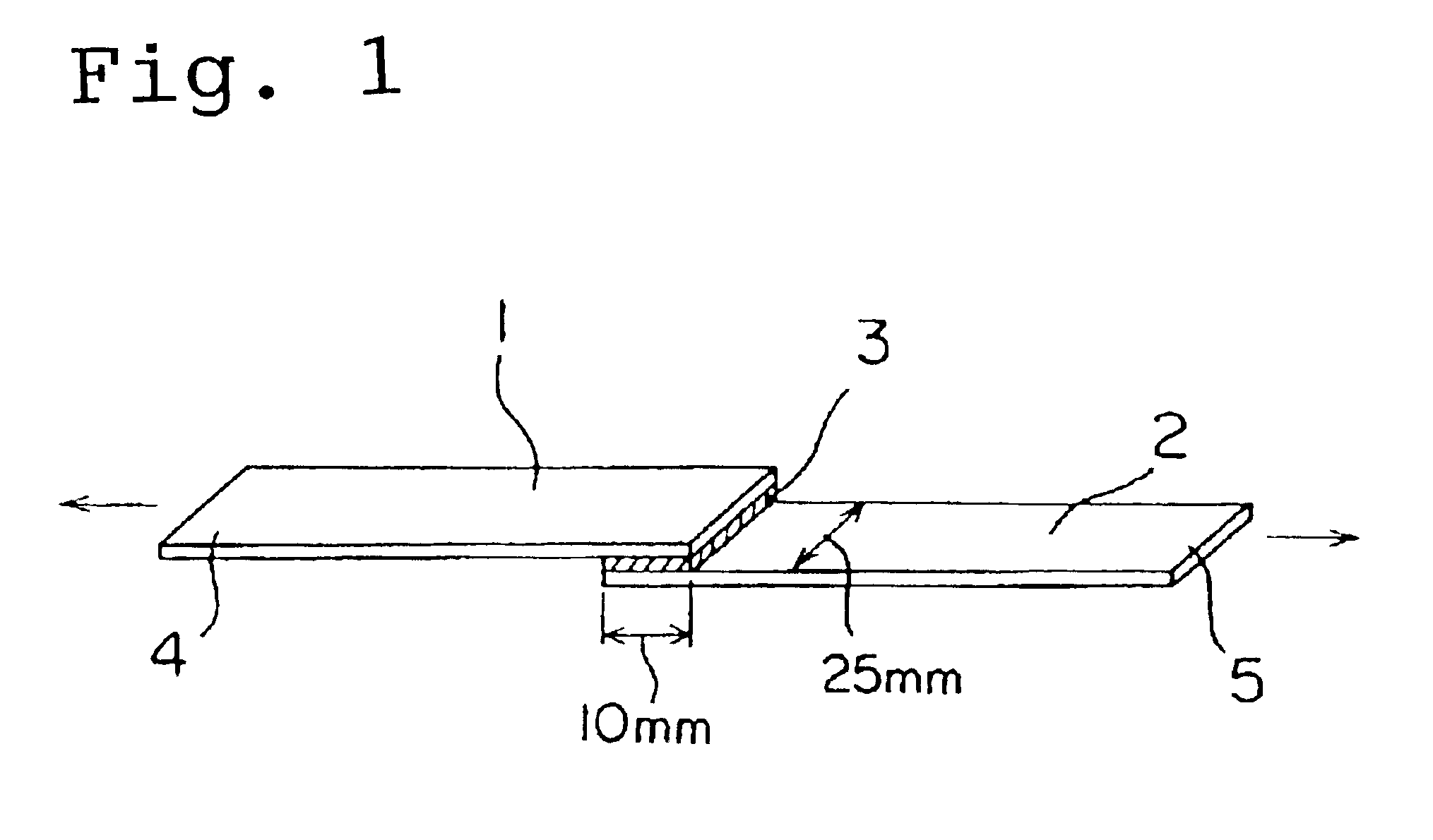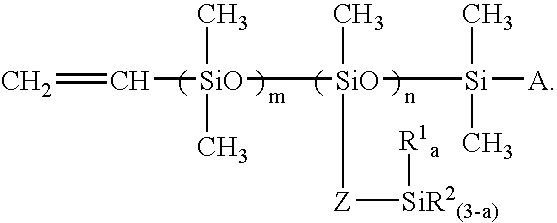Heat-conductive silicone rubber composition
a silicone rubber and composition technology, applied in the field of heat-conductive silicone rubber composition, can solve the problems of significant deterioration in the molding workability of the composition, affecting the performance of heat-generating components such as power transistors and thyristors, and affecting the heat-generating component performance, so as to achieve high heat-conductive performance, good adhesion to the substrate, and improved heat-generating performance.
- Summary
- Abstract
- Description
- Claims
- Application Information
AI Technical Summary
Benefits of technology
Problems solved by technology
Method used
Image
Examples
examples
As follows is a more detailed description of a heat-conductive silicone rubber composition of the present invention using a series of examples. The heat-conductive silicone rubber compositions of the examples and comparative examples were prepared by combining the constituents described below in the ratios (parts by weight) shown in the Table 1.
Constituent (A)
Constituent a-1: A dimethylpolysiloxane with both terminals blocked with dimethylvinylsiloxy groups, and with a viscosity at 25° C. of 30,000 mPa·s. dimethylvinylsiloxy groups, and with a viscosity at 25° C. of 600 mPa·s.
Constituent (B)
Constituent b: An organohydrogenpolysiloxane represented by a formula (CH3)3SiO[SiH(CH3)O]2Si(CH3)3 (Quantity of Si bonded H: 0.01451 mol / g) with a viscosity at 25° C. of 5 mPa·s.
Constituent (C)
Constituent c-1: A spherical aluminum oxide powder with an average particle diameter of 10 μm (brand name: Admafine AO-41R, manufactured by Admatechs Co., Inc.) Constituent c-2: A spherical aluminum oxide ...
examples 1 to 5
, Comparative Examples 1, 2
First, the constituent (A), the constituent (C) and the constituent (E) were combined in the relative quantities shown in Table 1 and Table 2, and then kneaded for 10 minutes at room temperature using a Shinagawa mixer. The mixture was then kneaded for a further 1 hour while the temperature was raised to 150° C. by heating. The thus obtained base was left to stand until the temperature had fallen below 40° C. The constituent (D) was then added and mixed uniformly, followed by the constituent (F), and then finally the constituent (B) was added and mixed uniformly to complete the preparation of a heat-conductive silicone rubber composition.
Each of these silicone rubber compositions was cured by heating for 1 hour at 120° C., and the hardness, the thermal conductivity, the tensile shear strength, and the shear adhesion strength were measured using the methods described above. The results of the measurements are shown in Table 1 and Table 2.
TABLE 1CompositionE...
PUM
| Property | Measurement | Unit |
|---|---|---|
| Temperature | aaaaa | aaaaa |
| Percent by mass | aaaaa | aaaaa |
| Percent by mass | aaaaa | aaaaa |
Abstract
Description
Claims
Application Information
 Login to View More
Login to View More - R&D
- Intellectual Property
- Life Sciences
- Materials
- Tech Scout
- Unparalleled Data Quality
- Higher Quality Content
- 60% Fewer Hallucinations
Browse by: Latest US Patents, China's latest patents, Technical Efficacy Thesaurus, Application Domain, Technology Topic, Popular Technical Reports.
© 2025 PatSnap. All rights reserved.Legal|Privacy policy|Modern Slavery Act Transparency Statement|Sitemap|About US| Contact US: help@patsnap.com



